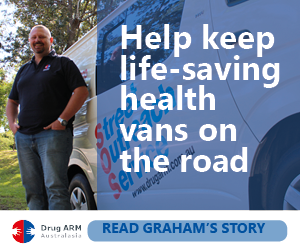Hal Hunter, the former Essendon player who has taken legal action against the club and AFL, says his diagnosis of anxiety and depression stem from concern about what he was given during the club’s 2012 injection program.
Speaking at length for the first time about his ordeal and his decision to take legal action, Hunter, 22, told Fairfax Media a psychological assessment had found there was a “direct link” between concern about what he was injected with and his condition.
It is a recipe for life-long anxiety and depression.
“Well, I had a psychological analysis and that’s what they told me, that there was a direct link between the two,” he said, in an in-depth interview in February.
“From what I was told from my psychological analysis and the psychologist that I see regularly, and I know myself, the anxiety comes from all the unanswered questions, all the possibilities that arise from the supplements program that I was involved in and that day to unanswered questions, the anxiety around that, obviously has huge impacts on my life. It’s not something there I can switch off, go to work, go ‘I’m not going to think about that.’ It’s always there.”
Hunter and his family have provided Fairfax Media with a summary of the psychologist’s assessment, which says a “psychological sword of Damocles” will hang over him all his life.
“It is a recipe for life-long anxiety and depression,” Professor Ian Coyle said in his statement. Hunter and his family have also spoken at length to the ABC’s Four Corners program in an investigation into Essendon’s drug scandal to be screened on Monday night.
Hunter, the only Essendon player from 2012 who has taken legal action, said that he felt he “had no choice” but to take legal action last year after trying unsuccessfully to gain more information from the club and AFL about what he had been given.
“We were left with no choice, really. We approached the club and the AFL to resolve this in October of 2014 and the correspondence after that between myself, Essendon and the AFL left us with no choice other than to go to court. I’m not sure if there are any other players in the same situation as me … obviously, everyone who received supplements or injections it differs greatly.”
Hunter, who was the youngest player at Essendon in 2012 when on the club’s rookie list, also revealed that he had gained about 10 kilograms – his weight reaching about 95 kilograms – during 2012, when the injection regimen occurred. “It was all lean muscle, lean muscle mass.” He did not know whether this was caused by the substances taken or not.
Hunter was ordered by the Supreme Court to pay some of Essendon’s costs in a judgment last month, and his parents issued a statement to Fairfax in January saying they were “appalled” that the AFL and the club were seeking costs.
But the AFL’s stance, in particular, has become far more conciliatory since and it is understood AFL officials have met Hunter’s father James and the league has dropped the pursuit of costs while offering assistance.
Essendon have provided Hunter with further documents and records from 2012 since the court judgment, in which Justice Mukhtar accepted that the Bombers had given Hunter all the records they had and thus ordered him to pay a portion of their costs. The Hunter team believe the belated handover of documents mean they should recover the costs from Essendon.
In other revelations from the Hunter interview:
- Hunter said the injection regimen had been “a huge factor” in his decision to retire from football completely. “I just couldn’t deal with the mental side any more, whilst dealing with the depression and the anxiety, which had a huge link to football.”
- Hunter said Essendon should provide him with compensation.
“Even if the club now is able to provide me with some information, which helps me answer a few of those questions, I deserve to be compensated for not having those questions answered up until now, if they can answer them. And if they can’t, then they need to compensate me for the impact [of] what took place at the club has had on my life, and looks like it’s going to have on my life for the foreseeable future.”
- Hunter’s concerns were heightened last year when he was rushed to hospital with a sudden illness and, when questioned about his history, told medical staff that there were substances he was injected with that he didn’t know about.
“I had to tell five different medical personnel about the lack of records in relation to supplements and intravenous drugs that I’d taken, which firstly prolonged the process, created confusion. I had to say I was an Essendon player – which for two of them, they said ‘OK, I understand now’.” The illness was later diagnosed as a viral infection.
- Hunter understood he had not received a show cause notice from ASADA – which ultimately led to suspensions for the 34 – even though he received a form with “thymosin” on it (evidence that the doping bodies said indicated it was the banned thymosin beta-4), because he did not sign the form.
“That’s what I’ve been led to believe … that because I didn’t sign the form, then for whatever reason, I didn’t get a show cause.”
- Hunter was among the players injected at the Hypermed clinic – when an unknown substance, purported to have been sourced from Mexico, was administered. Hunter received a note saying how many times he received injections at the clinic. “There’s no information about firstly what the amino acid was, how much was given, where it was sourced from.”
- Hunter, who remained in contact with other current and ex-Essendon players from 2012-13, said he had received strong support from a number of ex-teammates who shared similar feelings about what had happened.
“I’ve got some really close friendships with ex and current players at Essendon and at a few other clubs and the players who were at the club with me at the time who are either in a similar situation to me or were just at the club and were not in a similar situation. I’ve discussed it with them, they’ve discussed the situation with me and I think, well the feelings across the board are very similar.”
On the guilty verdicts for the 34 players, he said: “I was disappointed for the players, they’re all my friends … I keep in contact with a lot of them.”
Hunter, who did not play a senior game in his two seasons, said circumstances vary between players, “but the same questions are always there”.
“I think it’s inevitable that the rest of the playing group will pursue this in some way. I can’t speak for other players … but I feel like every other player has the right to at least ask the question. All the players, current and ex-players that I’ve spoken to are hugely supportive of what I’m doing, I’ve had a lot of public support from people I don’t know.”
- Hunter said the AFL and Essendon’s initial legal stance seeking costs was “quite aggressive and at odds with what they’re saying publicly, and that’s in relation to player welfare, health and safety across the board in the AFL.” The Hunters acknowledged after the interview that the AFL stance had shifted significantly.
- Hunter was concerned to discover there was a doctor’s name on some of his 2012 consent forms that he did not recognise – it was neither club doctor, Bruce Reid nor Brendan De Morton.
- Hunter, then 18, regrets that he did not ask more questions about the injection program.
“At the time I didn’t ask too many questions for a number of reasons … I thought, having no previous experience at an elite level sports club, I had nothing to compare it against. So I just assumed it was general practice and that obviously the correct due diligence had been done, the correct records were being kept.
“I look back now and I feel like an idiot and it’s a regret of mine not asking more questions, but at the time I didn’t and I just assumed that what we were getting given was what we were being told we were going to get given. It turns out that is not the case.
“Who was I to question how the system ran? I honestly thought this is what it takes to be the best, without actually breaking the anti-doping code, without breaking any laws. Which as the general understanding across the club, across the playing group … But as an 18-year-old kid, in his first job, in one of the big four clubs, I just assumed this was how it all ran, that all the other clubs did the same and if they weren’t, that’s why we were going to win.”
Hunter’s mother, Dr Melita Stevens, has a PhD in microbiology and did question him about the nature of the supplements in 2012, but he said he dismissed her concerns. “I regret this now … I said ‘mum, you don’t work at the club, you’re not a high-level sports scientist’.”
After Essendon’s self report to ASADA in 2013, Hunter said he told the club’s welfare officer “my mum’s going to be furious about this.” He said Dr Stevens had produced parts of the WADA code at a parent meeting at the club. “From what I can gather, it raised a lot of eyebrows.”
- Hunter said he had considered contacting the injection program architect, Stephen Dank, but doubted he would gain any helpful information. “I’ve considered it … but it’s not something at this stage we’re pursuing because at this stage … he had responsibility, as everyone has responsibility to do the right thing, but he wasn’t the one in charge, and from all reports I’m not going to get any information out of him that I can’t get out of the club.”
- Asked how he felt about ex-fitness boss Dean Robinson receiving an estimated $1 million in a settlement and the contract extension James Hird received, compared to his own struggles – and pursuit of costs by the club, Hunter said: “I’m undecided how I feel about that. But it is disappointing when as a player, you read in the media or you see in the television, spokespeople for both the club and the AFL saying publicly they support the player, they care about player welfare, then in reality the players are down the bottom.”
- Asked who, if anyone, he felt most responsible for the injection regime, he said: “I feel like anyone who had responsibility to run the program, or oversee it, or know what was going on in the program, if they didn’t fulfil their roles in doing any of those things, then I feel like they were partly responsible.”
- On his dramatic weight gain, Hunter said: “One of most notable changes, physical changes, in my first year is I put on about 10 kilos. I was doing minimal weights which was odd for a first-year player. But I did rapidly put on the weight, which could be attributed to the supplements we were taking at the time. I think it’s pretty well documented in the media that a lot of the players were putting on a lot of weight.
- Hunter said his mental issues “started to develop, from what I know, after I finished playing football at Essendon. I knew something wasn’t totally right … every day I’d wake up and I’d think about it. So I sort of knew there was an issue. I felt like it was abnormal to be feeling that way about it. It got progressively worse and worse”. The lack of information “compounded and that led us to get the psychological analysis, which the result to me wasn’t that surprising”.
- Hunter said he had decided to go public because he, his family and legal team “felt like this wasn’t getting the attention or the respect from Essendon or the AFL that it deserved.”
“Regardless of my status in the industry, there was something done to me – while I was contracted at the club, which is also a contract with the AFL – that shouldn’t have been done.” Hunter said after the self-report, the prevailing view of the players was that “it would blow over in a few weeks”.
This article first appeared on ‘The Age’ on 20 March 2016.























